- 1 Day Sundarban Tour
Pricing:
- ₹2799 per adult
- ₹1399 for children aged 4-8 years
- Free for children aged 1-4 years (under 48 months)
Facilities Included:
- Welcome Drink:
- Transportation: [Pick + Drop]
- Breakfast:
- Boat Safari:
- Lunch:
- Sightseeing:
- Guide Assistance:
- Snacks and Tea:
- Safety Measures:
- 1 Night 2 Days Sundarban Tour
Pricing:
- ₹4500 per adult (Non-AC room)
- ₹5000 per adult (AC room)
- ₹2250 for children aged 4-8 years
- Free for children aged 1-4 years (under 48 months)
Facilities Included:
- Welcome Drink
- Meals: All Times
- Boat Safari
- Accommodation: AC/ Non Ac
- Cultural Program:
- Visit Watchtowers and Local Attractions
- Safety
- Guided Tour
- Tea/Coffee Breaks
- 2 Night 3 Days Sundarban Tour
Pricing:
- ₹5500 per adult (Non-AC room)
- ₹6500 per adult (AC room)
- ₹2750 for children aged 4-8 years
- Free for children aged 1-4 years (under 48 months)
Facilities Included:
- Welcome Drink
- Meals: (breakfast, lunch, evening snacks, and dinner)
- Extended Boat Safaris: Multiple guided boat safaris
- Accommodation: in AC or non-AC rooms,
- Cultural Program:
- Visits to Key Attractions:
- Expert Guide:
- Tea/Coffee Breaks:
Sundarban 3 Days 2 Nights Package
Immerse in the wild beauty of Sundarbans with our 3 Days, 2 Nights adventure!
Book Sundarban 3 Days 2 Nights
Immerse in the wild beauty of Sundarbans with our 3 Days, 2 Nights adventure!
- 2 Night 3 Days Sundarban Boat Tour
Pricing:
- ₹5500 per adult (Non-AC room)
- ₹6500 per adult (AC room)
- ₹2750 for children aged 4-8 years
- Free for children aged 1-4 years (under 48 months)
Facilities Included:
- All Meals:
- Guided Boat Safaris:
- 2-Night Accommodation: Stay on the boat in comfortable AC or non-AC rooms.
- Cultural Performances:
- Attractions:
- Safety & Security:
Boat Sundarban 3 Days 2 Nights Package
Sail into the wild with our 3 Days, 2 Nights Sundarban Boat Adventure!
Sundarban 3 Days 2 Nights Package
Explore the untamed beauty of Sundarbans with a thrilling 3 Days, 2 Nights boat tour!
Exploring the Biodiversity of Sundarbans: Top 10 Animals to Watch For

Exploring the Biodiversity of Sundarbans: Exploring the Biodiversity of Sundarbans: The Sundarbans, a UNESCO World Heritage Site, is one of the world’s most unique and diverse ecosystems, famous for its extensive mangrove forests and rich wildlife. Located at the delta formed by the confluence of the Ganges, Brahmaputra, and Meghna rivers, this massive estuarine region spans across India and Bangladesh. It’s home to countless species of plants, birds, fish, reptiles, and mammals, many of which are rare, endangered, or endemic to the region. Let’s dive deeper into Exploring the Biodiversity of Sundarbans.

For nature enthusiasts, the Sundarbans offers an unparalleled opportunity to witness wildlife in their natural habitat. Here, we explore the top 10 animals that you should keep an eye out for when visiting this remarkable region. Also, you can Book the Sundarban Tour At Royal Sundarban Tourism and Sundarban Leisure Tourism Powered By Argusdna.
Exploring the Biodiversity of Sundarbans Important Points
1. Royal Bengal Tiger (Panthera tigris tigris)
Undoubtedly, the Royal Bengal Tiger is the most famous inhabitant of the Sundarbans. This apex predator symbolizes the wilderness of the region and plays a critical role in its ecosystem. The Sundarbans is one of the last strongholds of this majestic animal, harboring an estimated 96 to 100 tigers, according to recent reports.
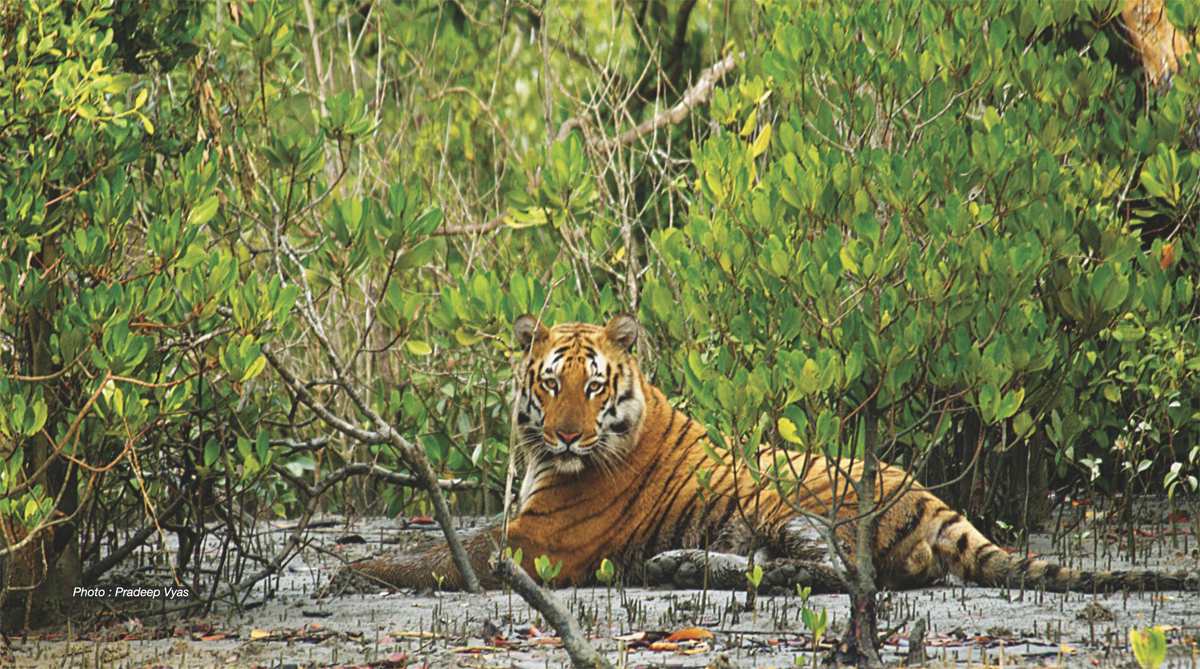
Unlike other tigers, the Royal Bengal Tigers in the Sundarbans are known to be adept swimmers, often navigating the complex network of tidal rivers and creeks. Spotting a tiger is rare, but if you’re lucky, you might witness this elusive creature during a safari or a boat tour.
2. Estuarine Crocodile (Crocodylus porosus)
Another apex predator that dominates the Sundarbans’ waters is the Estuarine Crocodile, also known as the saltwater crocodile. One of the largest reptiles in the world, these crocodiles can grow up to 7 meters in length and are known for their powerful jaws and stealth hunting tactics.
They thrive in the brackish waters of the mangroves, lurking near riverbanks, waiting for prey. While they are often spotted basking in the sun along the shores, they are equally dangerous when submerged in the waters.
Read More:
3. Fishing Cat (Prionailurus viverrinus)
The Fishing Cat is a nocturnal and semi-aquatic feline species found throughout the wetlands of Sundarbans. As its name suggests, this small, elusive cat is an excellent swimmer and has adapted to catching fish in the water, making it a unique predator of the mangrove ecosystem.
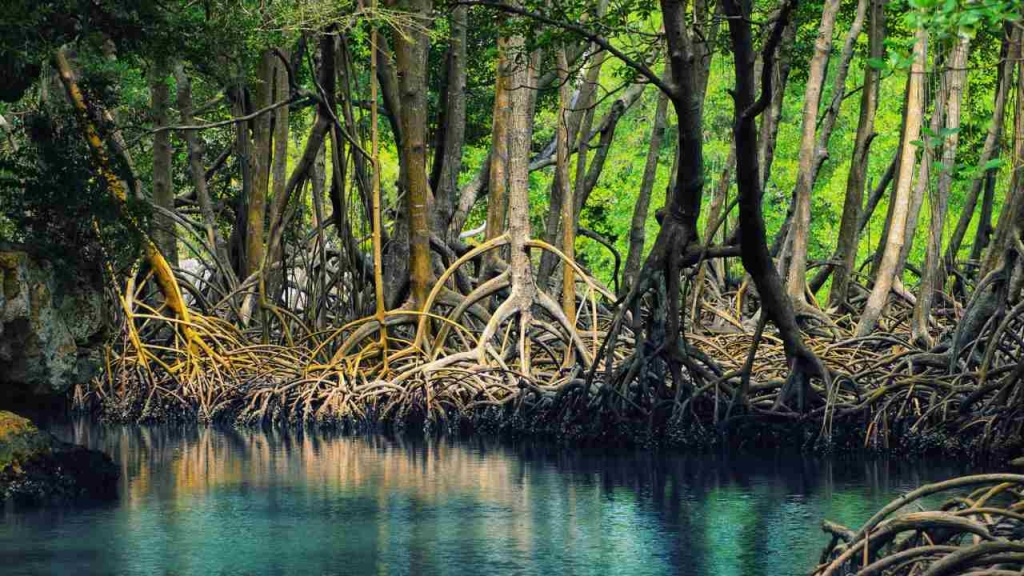
Spotting a fishing cat is a special treat for wildlife enthusiasts as they are shy and rarely seen during the day. Their camouflaged fur and adept fishing abilities make them well-suited for the dense, watery terrain of the Sundarbans.
4. Indian Python (Python molurus)
The Indian Python is one of the largest snake species found in the Sundarbans. Non-venomous but extremely powerful, pythons are known for constricting their prey before swallowing them whole. They can grow to an impressive length of up to 6 meters and are often found in the underbrush or near water bodies.
Pythons in the Sundarbans are primarily seen basking in the sun or lying motionless in the dense foliage. Their camouflage makes them difficult to spot, but they are a fascinating part of the region’s reptilian fauna. We can explore further details regarding Exploring the Biodiversity of Sundarbans.
5. Gangetic Dolphin (Platanista gangetica)
The Gangetic Dolphin, also known as the South Asian River Dolphin, is a freshwater species found in the rivers and estuaries of Sundarbans. This species is critically endangered, and the Sundarbans provides one of the last safe havens for these gentle creatures.
Gangetic Dolphins are unique because they are virtually blind, relying on echolocation to navigate and hunt in the murky waters of the Sundarbans. Spotting one during a river cruise is a rare and mesmerizing experience, as they often break the water’s surface with graceful arcs.
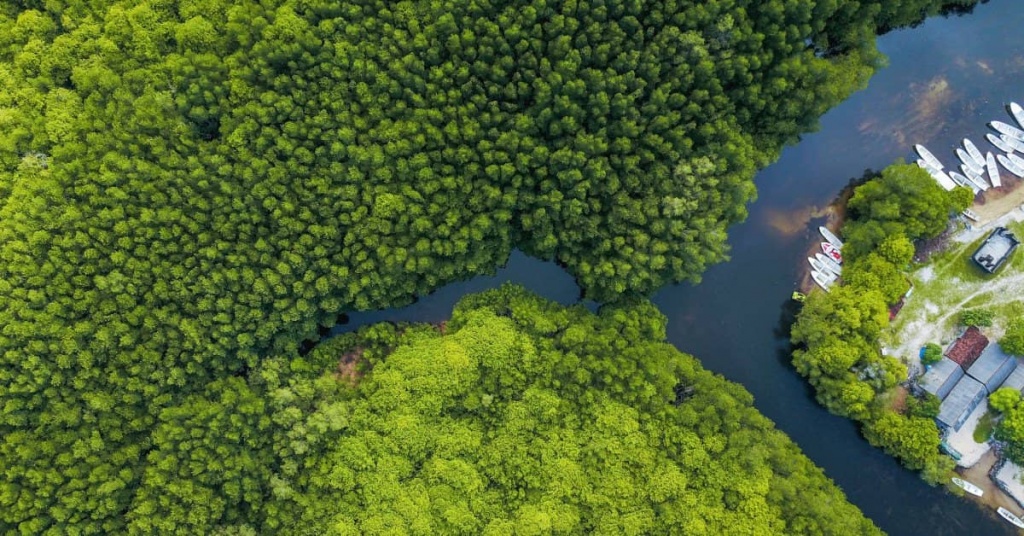
6. Olive Ridley Sea Turtle (Lepidochelys olivacea)
The Sundarbans is an important nesting ground for the Olive Ridley Sea Turtle, one of the smallest and most abundant sea turtles in the world. These turtles are known for their mass nesting events, called “arribadas,” where thousands of females come ashore simultaneously to lay eggs.
Although they spend most of their lives in the open ocean, these turtles return to the beaches of Sundarbans to nest, providing an awe-inspiring sight for travelers who visit during the nesting season.
7. Sundarbans Wild Boar (Sus scrofa cristatus)
The Sundarbans Wild Boar is a subspecies of the wild boar and an integral part of the mangrove ecosystem. These boars are prolific foragers, feeding on roots, fruits, and small animals, which helps in seed dispersal and maintaining the ecological balance of the forest.
Although they are widespread throughout the Sundarbans, they are most often spotted along the forest edges and mudflats. Wild boars also serve as prey for larger predators like the Royal Bengal Tiger.
8. Irrawaddy Dolphin (Orcaella brevirostris)
The Irrawaddy Dolphin is another aquatic mammal found in the brackish waters of the Sundarbans. Unlike most dolphin species, Irrawaddy dolphins have a rounded forehead and lack the elongated snout that is typical of other dolphins. They are known for their playful behavior and are often seen riding the bow waves of boats. We can go into more detail on Exploring the Biodiversity of Sundarbans.
While not as common as the Gangetic Dolphin, Irrawaddy Dolphins are a treat to spot, especially in the more secluded waterways of the Sundarbans.
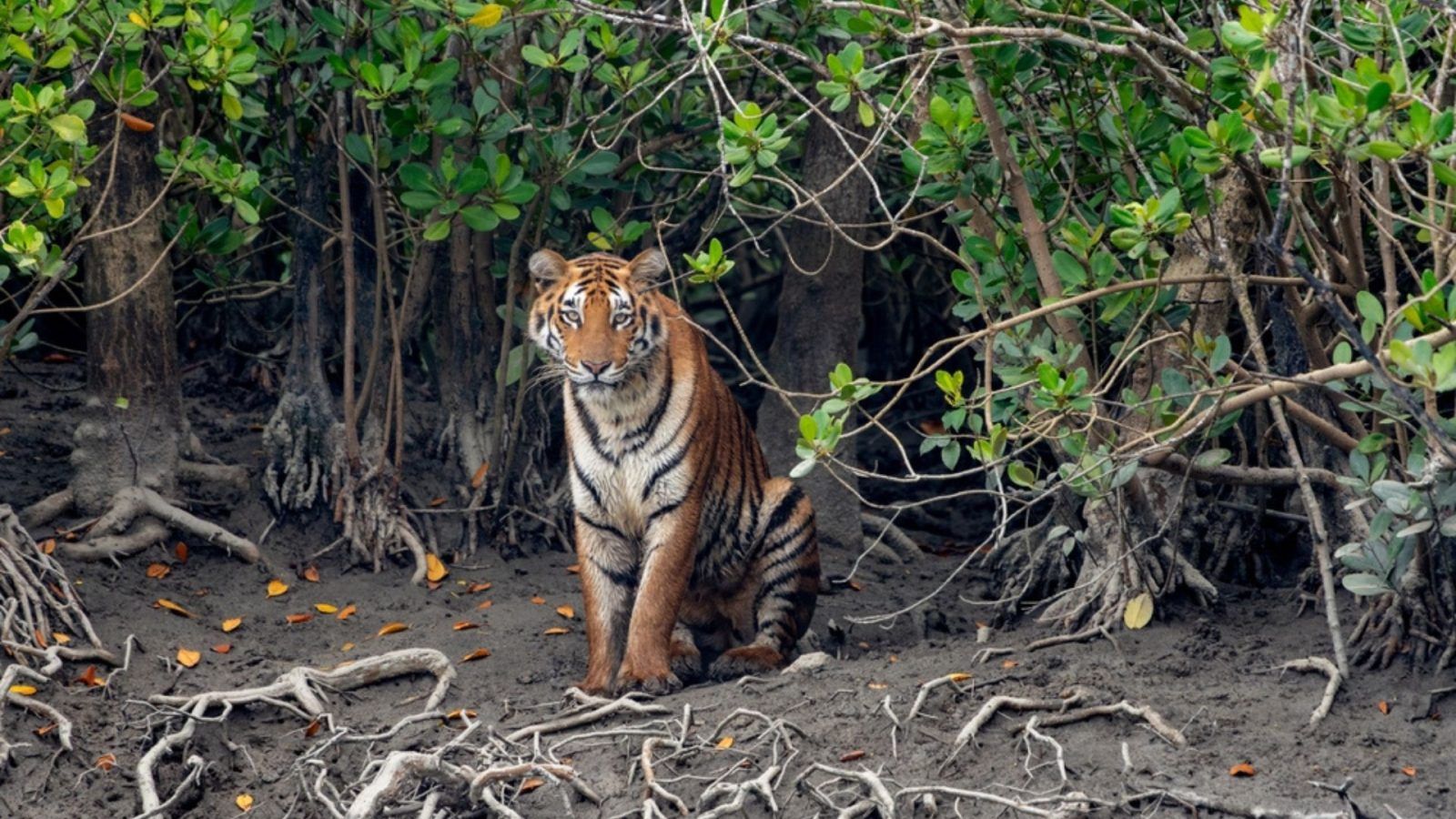
9. Water Monitor Lizard (Varanus salvator)
The Water Monitor Lizard is one of the largest reptiles found in the Sundarbans. Known for their strong limbs and sharp claws, these lizards are excellent swimmers and are often spotted near water bodies or basking in the sun on riverbanks.
Water monitors feed on a wide range of prey, including fish, small mammals, and birds, making them opportunistic hunters within the mangrove ecosystem.
10. Rhesus Macaque (Macaca mulatta)
The Rhesus Macaque is a common primate species in the Sundarbans, often seen in large troops near villages or along riverbanks. These intelligent and adaptable monkeys are known for their curious nature and are often observed raiding crops or scavenging food from nearby human settlements.
Rhesus macaques play an important role in the ecosystem as seed dispersers, helping to maintain the biodiversity of the Sundarbans’ forests. Let’s talk more about Exploring the Biodiversity of Sundarbans.
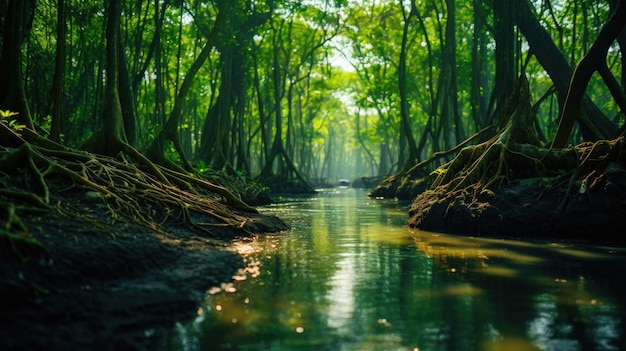
The Importance of Conservation in the Sundarbans
The Sundarbans is not just a treasure trove of biodiversity but also a critical habitat for many endangered species. However, this region faces multiple threats, including climate change, rising sea levels, habitat destruction, and poaching. Conservation efforts in the Sundarbans are crucial for preserving the delicate balance of this ecosystem and ensuring the survival of its incredible wildlife.
Local authorities and international organizations are working together to protect the Sundarbans, including the establishment of protected reserves, wildlife monitoring programs, and community engagement initiatives. As a responsible traveler, visitors can contribute to these efforts by supporting sustainable tourism and following guidelines that minimize human impact on the environment.

Conclusion
The Sundarbans offers an unparalleled opportunity to explore one of the most diverse ecosystems on the planet. Whether it’s the elusive Royal Bengal Tiger, the mighty Estuarine Crocodile, or the playful Gangetic Dolphin, each species in the Sundarbans plays a crucial role in maintaining the health of this intricate ecosystem.
For wildlife enthusiasts and eco-tourists, a visit to the Sundarbans is an unforgettable experience that brings you face-to-face with nature’s most fascinating creatures. By exploring responsibly, travelers can help ensure that this vital region continues to thrive for generations to come.















